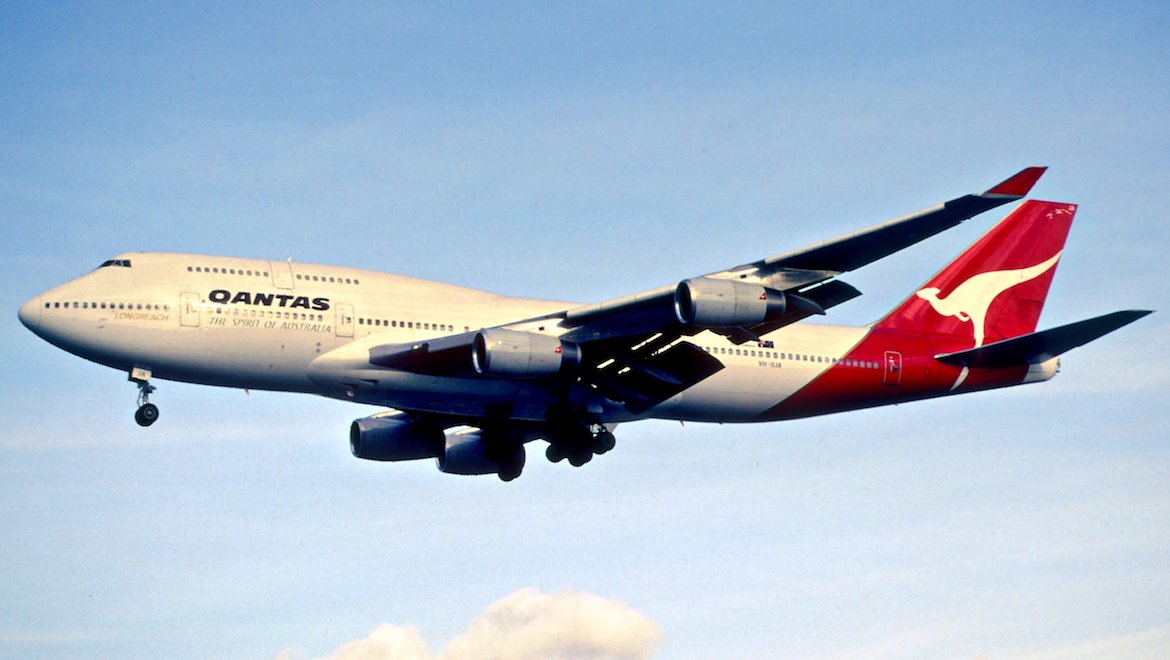
Qantas says it plans to conduct three research flights from New York and London to Sydney as part of its Project Sunrise evaluation.
The three flights, expected to occur during the final three months of calendar 2019, will use new Boeing 787-9s which will be positioned to New York and London after being delivered to the airline, Qantas said on Thursday.
Qantas said the flights would test different approaches to crew and passenger wellbeing as part of designing unique ultra-long haul services.
“We’ll have researchers from Monash and Sydney universities on board, running tests on crew wellbeing and passenger comfort for almost 20 hours,” Qantas chief executive Alan Joyce said in a statement.
“For weight reasons, there will only be about 40 people on board in total to give the 787 the range it needs.
“These flights are ground-breaking in themselves. No commercial airline has done these kind of experiments before. No commercial airline has ever flown direct from New York to Sydney before.
“The things we learn will be invaluable not just for Sunrise, but for all our long-haul services.”

Joyce said the carbon emissions for the flight would be fully offset.
From a pilot’s perspective, Qantas Captain Lisa Norman said the research flights would aim to replicate what a pilot would experience on a typical rostering pattern that included these ultra-long haul routes.
“We will try and accomodate a normal pattern for the pilot,” Captain Norman explained to Australian Aviation on Thursday.
“So the pilot will fly from maybe Brisbane or Melbourne up to Los Angeles for example, they will have their rest that we do now. They will fly to New York, they will have the rest that they do now. And then we will do the New York-Sydney.
“We are monitoring all this preflight, in-flight and post flight.”
“About a week beforehand we will probably start testing the pilots and their sleep patterns and asking them questions and things like that.
Captain Norman, who is the manager of fleet operations for the Boeing 787-9 at Qantas, said the airline was working with Australia’s Civil Aviation Safety Authority (CASA) in the lead up to the three flights.
“It’s a private flight so we don’t need to have their approval but we’ve brought them along as well,” Captain Norman said.
New York-Sydney measured 8,646nm, according to the Great Circle Mapper, while London-Sydney was 9,188nm. Both flights were expected to take 18.5 hours, according to figures from Qantas. The Boeing website listed the 787-9 with a range of 7,530nm when configured with 296 passengers.
However, with about 40 passengers – mostly Qantas employees – expected to be on the 787-9, Captain Norman said there was “no question of it doing the sector”.
Challenges for these ultra-long haul flights included navigating the strong headwinds, as well as securing appropriate takeoff and landing slots for the 787-9s into and out of busy airports at London and New York.
Qantas said the pilots would wear an electroencephalogram to track brain wave patterns and monitor their alertness.
“The aim is to establish data to assist in building the optimum work and rest pattern for pilots operating long haul services,” Qantas said.
Meanwhile, from a passenger perspective, Qantas said scientists from Sydney University’s Charles Perkins Centre would monitor sleep patterns, food and beverage consumption, lighting, physical movement and inflight entertainment to assess impact on health, wellbeing and body clock. The passenger would also be wearing technology devices.
The three proposed research flights would also build on the data already gained from the operation of Perth-London Heathrow nonstop flights that began in March 2018.
It was also reminiscent of the delivery flight of Qantas’s first Boeing 747-400 VH-OJA, which flew nonstop from London Heathrow to Sydney 30 years ago on August 17 1989.
However, Qantas said it would be the first nonstop flight by a commercial airline from New York to Sydney.

Project Sunrise – the name is a nod to the Catalina flying boats operating between Perth and the country now known as Sri Lanka during World War II – was launched in August 2017.
The airline has been evaluating launching nonstop flights from Australia’s east coast to London, New York and elsewhere with either Airbus A350s or Boeing 777-X equipment.
Qantas has said previously the business case for these ultra-long-range services was contingent an appropriate aircraft, as well as a new agreement with its pilots, changes to regulations regarding fatigue and duty hours for crew and an appropriate cabin configuration.
A request for information (RFI) with Airbus and Boeing was conducted in 2018 that went through the technical capabilities of the A350 and 777-X platforms.
Joyce told Australian Aviation earlier in 2019 the RFI process concluded that what Airbus and Boeing could offer would be able to operate with a full payload between Sydney and New York and a “commercial payload” between Sydney and London.
We're embarking on three research flights to help plan how we care for passengers & crew on future long-haul flights. New #787Dreamliners will fly non-stop flights from #NYC & #London to #Sydney, fully carbon-offset with only 40 people onboard. Read more: https://t.co/OtddNYWQMD pic.twitter.com/JDzHYegkzU
— Qantas (@Qantas) August 21, 2019
The Qantas chief executive told reporters at the airline group’s 2018/19 full year results presentation on Thursday it was on track to make a decision whether to proceed with Project Sunrise and make an aircraft order by the end of calendar 2019.
“We know that Boeing and Airbus have aircraft that can do the job, and we have their best-and-final offers on the table, including a compelling offer from Boeing to deal with any delay to the 777-X,” Joyce said.
“There’s plenty of enthusiasm for Sunrise, but it’s not a foregone conclusion.”










